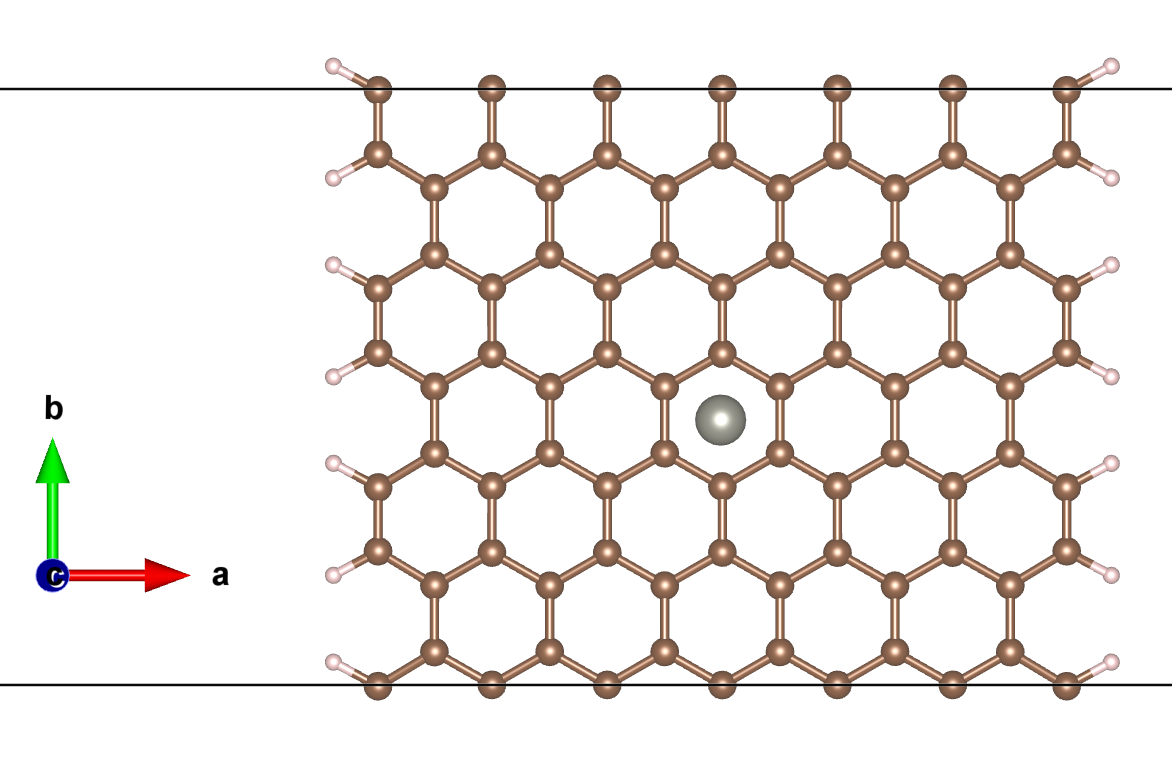I am trying to repeat the result of this paper for Zn absorbed on the armchair graphene slab.
The relaxed top and side structures are the following:
The relaxed structure is almost the same as the cited paper. Then the energy calculation based on this relaxed structure is listed below:
- E(slab+Zn)=-759.31696 (eV)
- E(slab)=-759.30724 (eV)
The energy of Zn is obtained from its bulk calculation:
- E(Zn)=-1.1078938 (eV)
Then the binding energy is estimated as:
- $\Delta E$=E(slab+Zn)-E(slab)-E(Zn)=1.0981738 (eV)
However, the result of the cited paper is -0.2 eV:

What am I missing?
For completeness, I will give my input cards for relaxation and static calculations as follows:
System=2D
ISTART=0 !startjob: 0-new 1-cont 2-samecut
ICHARG=2 !charge: 1-file 2-atom 10-const
ENCUT=500 !energy cutoff in eV
EDIFF=1E-6 !stopping-criterion for electronic upd.
NELM=300 !nr. of electronic steps
ISMEAR=0 !part. occupancies
SIGMA=0.05 !broadening in eV -4-tet -1-fermi 0-gaus
IALGO=38
LREAL=Auto
IVDW=11
#------------------
#ISPIN=2 !spin polarized calculation (2-yes 1-no)
#MAGMOM=128*0 !initial mag moment / atom
#LSORBIT=.TRUE. !if .TRUE. switches on spin-orbit coupling
#SAXIS= 0 0 1 !quantisation axis for spin
#ISYM=0 !symmetry: 0-nonsym 1-usesym
Dynamic:
ISIF=2
IBRION=2
NSW=300
EDIFFG=-0.005
Parallelization:
NPAR=8
#KPAR=4
Output:
LCHARG=.FALSE.
LWAVE=.FALSE.
=========================================
System=2D
ISTART=0 !startjob: 0-new 1-cont 2-samecut
ICHARG=2 !charge: 1-file 2-atom 10-const
ENCUT=500 !energy cutoff in eV
EDIFF=1E-6 !stopping-criterion for electronic upd.
NELM=300 !nr. of electronic steps
ISMEAR=0 !part. occupancies
SIGMA=0.05 !broadening in eV -4-tet -1-fermi 0-gaus
IALGO=38
LREAL=Auto
IVDW=11
#------------------
#ISPIN=2 !spin polarized calculation (2-yes 1-no)
#MAGMOM=128*0 !initial mag moment / atom
#LSORBIT=.TRUE. !if .TRUE. switches on spin-orbit coupling
#SAXIS= 0 0 1 !quantisation axis for spin
#ISYM=0 !symmetry: 0-nonsym 1-usesym
Dynamic:
#ISIF=2
#IBRION=2
#NSW=300
#EDIFFG=-0.005
#Parallelization:
NPAR=8
#KPAR=4
Output:
#LCHARG=.FALSE.
#LWAVE=.FALSE.
For convenience, the computational details for the cited paper are put below:


